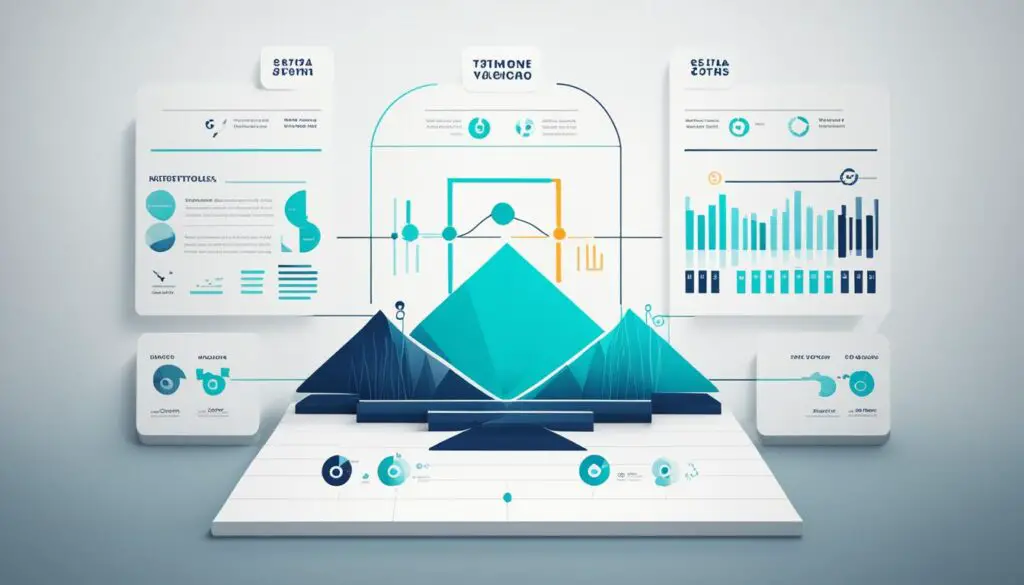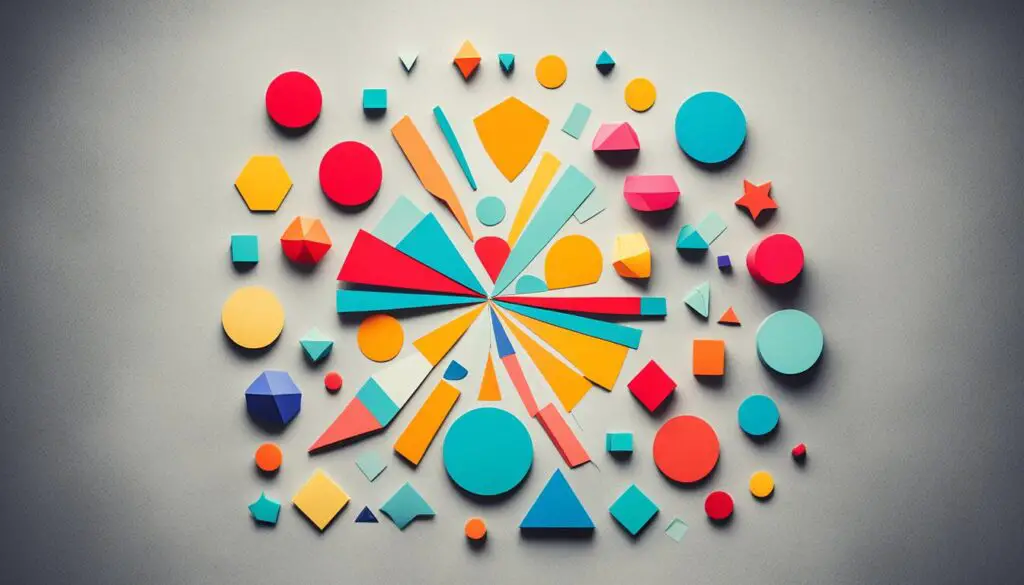Visualizing Data: Techniques for Effective Communication
In today’s fast-paced world, good communication is key. Data visualization helps turn complex information into easy-to-understand images. This makes communication better and helps in making smart choices. Data in the form of charts and graphs is easier for our brains to get. It leads to clearer trends and decisions.
To use data visualization well, you need to pick the right type. Then, make the data simple and clear. Using color wisely and telling an interesting story also matter. For example, think of COVID-19 dashboards or Google Analytics. Even financial reports use these ideas.
Key Takeaways:
- Data visualization is crucial for effective communication in today’s business landscape.
- Data visualization presents complex data in visually appealing graphics for easier interpretation.
- Selecting the right visualization type, simplifying and focusing the data, using color strategically, and telling a compelling story are key techniques for effective data visualization.
- Real-life examples of data visualization include COVID-19 dashboards, Google Analytics, and financial reports.

Importance of Choosing the Right Visualization Type
Choosing the best way to show your data is key. A good visualization type can help people understand your data easily and accurately. Each kind of data needs its own special way to be shown.
Now, let’s look at some common types of visualizations and when to use them:
- Bar charts: Great for comparing things. They let you see how different categories or groups stack up against each other visually. For instance, you might compare the sales of various products or the success of different teams.
- Line graphs: Perfect for tracking changes over time. Use them to show data that evolves steadily, like stock prices, website hits, or year-long temperature shifts.
- Pie charts: Best for showing parts of a whole. Pie charts divide a circle to show what makes up the whole, good for showing market share or budget distribution.
- Heat maps: These are ideal for data that can be mapped out. They use colors on a grid to show different data values. Heat maps are especially useful in fields like website analytics to highlight user actions.
When choosing a way to visualize your information, think about what story you want to tell. Picking the right type helps make your data clear and easy to understand.

Example of Bar Chart Visualization:
Let’s say a retail company wants to compare product sales across regions. A bar chart can clearly show which products are doing well and which need work. Here’s an example:
| Region | Product A | Product B | Product C |
|---|---|---|---|
| North | 120 | 80 | 150 |
| South | 80 | 100 | 120 |
| East | 100 | 120 | 90 |
| West | 150 | 110 | 80 |
In the chart, it’s clear Product C is best in the North and Product B is good in the South. This view helps the company see sales trends by region, aiding decision-making.
Key Techniques for Effective Data Visualization
To make great data visualizations, simplify the information. Avoid too much clutter. This keeps the data clear for the viewer. If the data is complex, break it into smaller parts. This makes it easier to understand.
Color plays a big role too. Choose colors wisely to show what’s important. Use a set color scheme. This helps viewers see the differences clearly. Adding contrast makes the visualization look better and clearer.
Finally, a good visualization is like telling a story. Arrange your data to guide people through your message. This approach makes your data more engaging and easy to remember.
